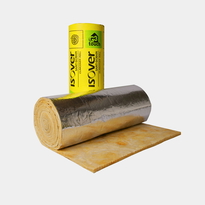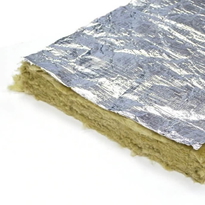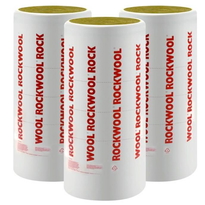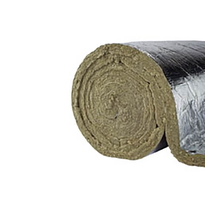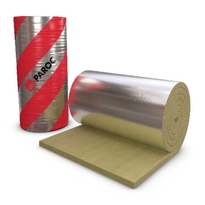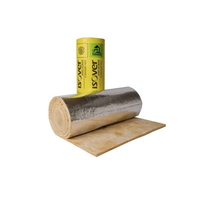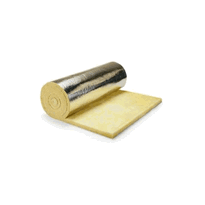Hot Water Tank Insulation
Insulating a hot water tank in the UK reduces heat loss, leading to lower energy consumption and significant savings on utility bills over time. The process involves wrapping the tank with suitable insulating materials such as fiberglass, foam, or foil barriers, ensuring that the covering is complete without obstructing access points, vents, or control valves.
Proper installation is crucial for maximum efficiency. It is important to ensure that the insulation material fits snugly around the tank to minimise thermal bridging and heat loss. Regular maintenance, including checking for any damage or deterioration of the insulation, will help to extend the lifespan of the tank and maintain optimal energy efficiency.
Using high-quality materials and following best practice guidelines can enhance the effectiveness of your insulation. This not only reduces your household's carbon footprint but also contributes to environmental sustainability by decreasing the amount of energy required for hot water heating.
Further guidance on selecting the right insulation materials and applying them correctly can provide additional benefits and ensure your hot water system remains efficient year after year.
The Benefits of Insulating Your Hot Water Tank
Insulating a hot water tank provides numerous practical benefits by significantly enhancing energy efficiency, lowering operational costs, and prolonging the lifespan of the unit.
Proper insulation reduces standby heat loss by approximately 25–45%, which decreases the amount of energy required to maintain the water temperature. Consequently, the daily running time of the tank can be reduced by 1–3 hours in cases where insulation is inadequate.
This reduction in energy consumption amounts to an overall decrease of about 7–16% annually, with the Environmental Protection Agency estimating a payback period as short as one year.
In practical terms, this can translate into lower household energy bills—potentially saving up to 16%—and contribute positively to environmental sustainability by reducing greenhouse gas emissions.
Additionally, insulation helps minimize unnecessary wear caused by temperature fluctuations, offers protection to tank components, and enhances overall durability.
This makes insulation a sensible investment for those seeking sustainable, cost-effective solutions for hot water management, particularly within the UK's energy-conscious context.
Types of Insulation Materials and Methods
A variety of insulation materials are available to effectively reduce heat loss from hot water tanks, each offering distinct advantages suited to different installation scenarios and performance requirements.
Fiberglass blankets are cost-effective and easy to install, making them popular for general use.
Flexible polyurethane foam provides excellent thermal resistance and adapts to different tank shapes.
Foam insulation, which creates a seamless barrier, minimizes heat loss effectively.
Foil-bubble radiant barriers reflect radiant heat, reducing heat transfer through radiation.
Pre-fabricated tank wraps facilitate quick installation and come in various sizes to fit different models.
When applying insulation, sealing seams with tape prevents air leaks.
Insulation shouldn't obstruct access to valves, thermostats, or controls.
Proper placement ensures maximum efficiency while maintaining safety and accessibility.
How Insulation Saves You Money and Energy
Reducing standby heat loss is one of the most effective ways to lower energy consumption and save money on water heating costs. Insulating a hot water tank can decrease standby heat loss by approximately 25–45%, which directly leads to less energy required to maintain the water temperature. This results in fewer heating cycles and continuous savings over the course of the year. Additionally, many utility companies offer or low-cost options for installing insulation blankets, making this upgrade more accessible and affordable for homeowners.
The following table highlights the potential benefits:
| Benefit | Explanation |
| Cost Savings | Can reduce water heating bills by around 7–16%, equating to approximately £15–£40 annually. |
| Environmental Benefit | Less energy use translates to fewer greenhouse gas emissions, supporting environmental sustainability. |
| Equipment Longevity | Proper insulation minimizes thermal stress on the tank, helping to extend its lifespan. |
| Easy Installation | Insulation materials are widely available and simple to fit, often suitable for DIY projects. |
Implementing proper insulation presents a practical and cost-effective method for households to improve energy efficiency and contribute positively to the environment.
Factors That Affect Insulation Efficiency
The effectiveness of hot water tank insulation depends heavily on several key factors that influence its ability to minimize heat loss and deliver energy savings. Material type plays a significant role; blanket insulation is cost-effective and simple to install, whereas foam insulation provides a seamless layer but may require professional expertise. [Heat transfer methods, including conduction, convection, and radiation, are mitigated by choosing the right insulation materials.] The insulation’s thickness and its K-value or U-value determine its efficiency, with lower UK-specific U-values indicating better thermal performance. Proper installation ensures optimal performance and prevents damage, while moisture resistance is essential to prevent long-term degradation. [External factors such as UV exposure and harsh climates] can also impact the lifespan and effectiveness of the insulation. Environmental factors, such as ambient temperature and the tank’s location, also impact heat loss; colder surroundings increase the need for effective insulation. Understanding these factors is crucial for selecting appropriate materials and ensuring maximum energy conservation over the long term.
Installing and Maintaining Hot Water Tank Insulation
Proper installation and ongoing maintenance of hot water tank insulation are essential to ensure its effectiveness over time.
To install insulation correctly, gather the necessary materials, such as an insulation blanket, scissors, a marker, a tape measure, gloves, a dust mask, and electrical tape.
Begin by switching off the water heater and measuring its height to cut the blanket to the appropriate size, leaving openings for vents and valves. Carefully wrap the insulation blanket around the tank, making sure to cover all accessible surfaces without obstructing vents or access panels.
Secure the blanket with electrical tape, ensuring it remains firmly in place. Regular inspections are crucial to identify any damage, wear, or signs of deterioration. Pay particular attention to older tanks or those with heavy usage, as insulation may degrade over time.
When inspecting, verify that the insulation is intact and that it doesn't block airflow or access points necessary for maintenance or safety checks. Additionally, choosing high-quality insulation materials can improve thermal performance and longevity.
Replace the insulation if it shows signs of significant damage or deterioration. Always follow the manufacturer’s instructions, especially if your system is gas or electric, to ensure safe and effective insulation maintenance.
Maintaining proper insulation not only enhances energy efficiency but also prolongs the lifespan of your hot water system, contributing to more sustainable and cost-effective household management.
Conclusion
Insulating a hot water tank is an effective way to minimize heat loss, reduce energy consumption, and lower utility bills. Choosing suitable insulation materials and ensuring correct installation are essential for maximizing efficiency. Regular maintenance, including checking the insulation’s condition, helps to maintain performance over time. By understanding these factors and following established procedures, homeowners and property managers in the UK can achieve substantial energy savings while maintaining a reliable hot water supply. This not only enhances cost-effectiveness but also supports environmental sustainability.
